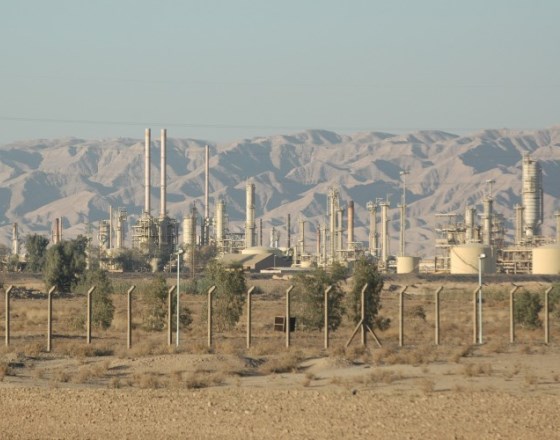
Since 2010, Iraq oil production has grown by two million b/d and reached a record high of 4.4 million b/d in the third quarter of 2015.
The growth is in part due to the push by lawmakers to boost oil production to generate badly needed income, as the government continues to struggle financially to contain Islamic State militants in the northern and eastern provinces of Iraq.
Looking ahead to 2016, Iraq’s oil production is contingent on several political risk challenges that Iraqi leaders must address to maintain strong production levels.
Financial market strains
Iraqi oil reserves are considered the world’s fifth largest ones, with 140 billion barrels, and Iraq is OPEC’s second largest producer behind Saudi Arabia.
However, a decade of war, domestic political disputes, insufficient investments, and low oil prices has placed a strain on Iraq’s oil sector.
Defense spending has risen significantly since the U.S. invasion in 2003. The takeover of Mosul by Islamic State militants in June 2014 has fueled defense spending over the last year and a half, pinching the national budget so much that investments towards oil production are often insufficient to operate at max capacity.
Iraq’s defense spending is likely to continue to place a strain on the national budget in 2016 until ISIS is effectively pushed out of Ramadi and Mosul. While security forces have made recent gains against ISIS in Ramadi, capturing Mosul could take months.
Low oil prices and rising imports are also placing strain on the Central Bank of Iraq and oil revenues. Foreign currency reserves have reportedly shrunk from $78 billion at the end of 2013 to $59 billion in mid-2015. The Iraqi dinar also fell sharply across markets this past year.
The low prices of oil is also undervaluing current exports and inhibiting the government from making larger gains. Figures show that a year ago, the government pulled in about $300 million per day in revenue. Now it’s down to roughly $240 million a day.
Low oil prices are likely to negatively impact Iraq’s oil revenues in 2016, especially as Iran gears up to begin exporting its oil to western nations, further flooding the supply market.
Internal political challenges
Domestic political disputes over oil production between the central government in Baghdad and Kurdish officials in Erbil is further impacting the rate of oil production.
As of mid-November, Kurdistan is exporting over 500,000 b/d of oil, every seventh barrel of OPEC’s second largest exporter. The exports, however, are controversial as Bagdad accuses Erbil of bypassing existing legislation on oil exports and failing to transfer agreed volumes of oil to the government.
In December 2014, Kurdistan and Bagdad signed a deal in which Kurdistan is required to transfer some average 550,000 bpd to Iraqi state oil firm SOMO over the course of 2015 while receiving 17 percent of Iraqi budget or over $1.1 billion a month.
However, the deal quickly unraveled as Kurdish officials say they the volume of oil transfer is too high with current “insufficient” funds from the government.
Both Erbil and Baghdad have a need to fund their own security forces to counter the threat of ISIS within Iraq, and revenue from oil plays a key role in supporting security operations.
Moving forward, it is unlikely a deal will be reached between both governments unless Baghdad is able to accept a lower threshold of oil transfers from Kurdistan. Meanwhile, current political challenges could scupper production output by 10%.
Humanitarian crisis
In addition to security and political problems, investment for oil is being hindered by the mass exodus of refugees and internally displaced peoples.
The influx of millions of refugees and displaced peoples has placed a stain on the government, especially with respect to providing adequate aid and security to displaced peoples.
Likewise, a worsening security situation may cause skilled laborers such as oil field works and technicians that are critical to maintaining Iraqi oil exports to leave Iraq.
Remaining steps forward
In order for Iraq to effectively reach full operating capacity, Iraq must ultimately improve the vastly deteriorating security situation and strengthen counterterrorism efforts to stop the spread of violence and boost investor confidence.
Luckily, Iraq’s largest oil refineries in the southern areas have largely been unaffected by recent violence. The recapture of the Baiji oil field from ISIL militants can also be seen as a strategic success.
Additionally, Iraqi lawmakers must place serious commitment and investment towards oil infrastructure modernization. Commercial and technical difficulties continue to plague Iraq oil production, though the recent surge in production output is a positive sign for Iraq’s future production potential.
Low oil prices will remain a challenge for Iraq’s oil sector, especially as Iran is expected to enter the market in 2016. In the long-run, Iraq must work to diversify its economy and energy exports to soften the blow for future price drops.
original source: http://globalriskinsights.com/2015/12/the-future-of-oil-production-in-iraq/
